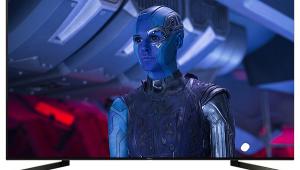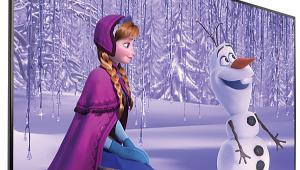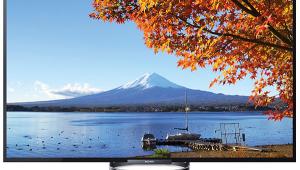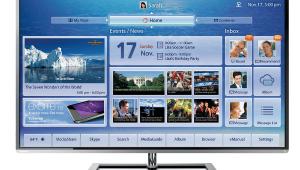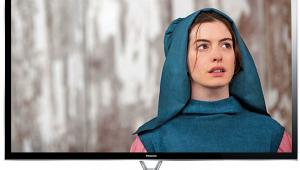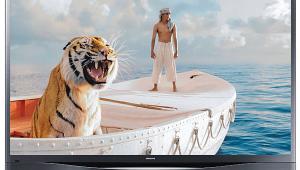Sharp LC-60UD27U LCD/LED HDTV Review Test Bench
The measurements here were made using CalMAN measurement software from SpectraCal and a Photo Research PR-650 color meter. Full-On/Full-Off Contrast Ratio: 6,217:1
Pre-calibration measurements were made in the THX Movie Dark Room preset at the default settings. Post-calibration measurements were made in the same mode. With the LC-60UD27U’s AquoDimming processing set to High, its black level measured 0.006 foot-lamberts and peak white 37.3 ft-L, for a contrast ratio of 6,217:1. With AquoDimming processing switched off, black level measured 0.012 ft-L and peak white 36.8 ft-L, for a contrast ratio of 3,067:1. The Medium and Low AquoDimming modes delivered about equal or worse contrast than simply leaving the processing turned off.
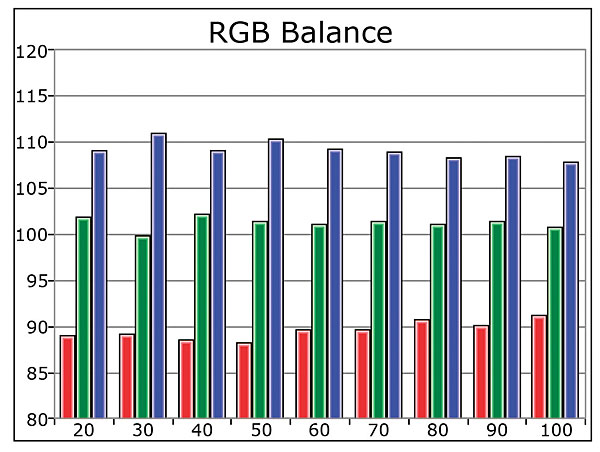
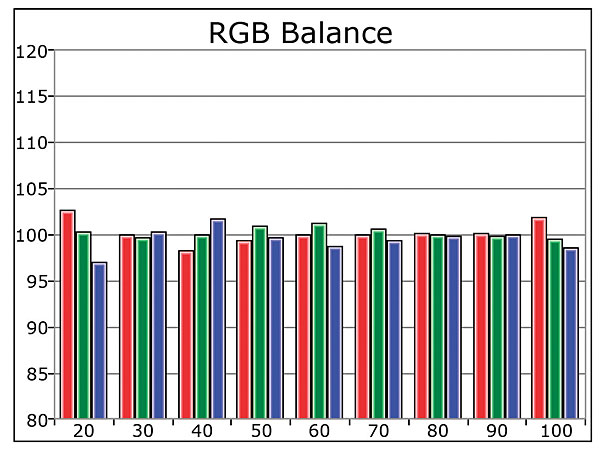
The Sharp’s performance in black level and contrast is notably worse than that of most other TVs Sound & Vision has tested that provide hardware-based local dimming.
Before calibration, the Sharp’s gray scale showed a distinct bluish bias at all IRE levels. The Delta E of its pre-cal gray scale averaged out to 11.4; calibration greatly improved that average to 1.4, with a high of 3.5 at 20% brightness. Gray-scale tracking was smooth throughout its entire brightness range. (Delta E is a figure of merit that indicates how closely a display adheres to the Rec. 709 HD color standard. Experts generally agree that levels below 3 are visibly indistinguishable from perfect color tracking.)
The Delta E of the Sharp’s color points at the THX Movie Dark Room preset default settings averaged a just-OK 4.4. Calibration improved that to 2.5.
With High AquoDimming turned on and the default Gamma preset selected, gamma in the THX Movie Dark Room mode averaged 2.16, hitting 2.2 at 90%. Calibration improved that to 2.2, with mostly linear tracking through the full IRE brightness range.
Full-field gray test patterns revealed uniformity problems. Spotlights were particularly visible when displaying a 0% (black) pattern, and they could also be seen on regular program material.

Off-axis performance was about average, with contrast and color starting to fade when viewing about 20° off from center-screen. The Sharp passed all of our standard- and high-def video-processing tests, as well as the clipping and luminance/chrominance multiburst tests. The set’s AquoMotion mode failed to improve motion resolution at all presets.--AG
- Log in or register to post comments

